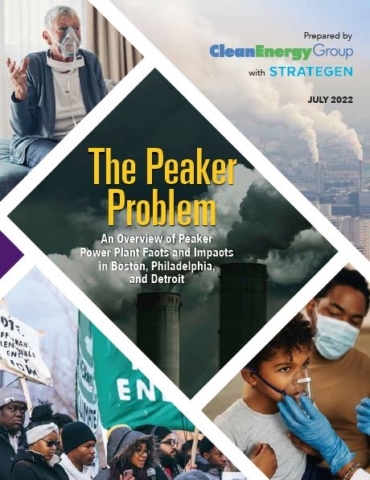The Peaker Problem: An Overview of Peaker Power Plant Facts and Impacts in Boston, Philadelphia, and Detroit
July 27, 2022
Clean Energy Group, Strategen
More than 4.4 million people in urban areas in the United States live within one mile of a peaker power plant and are unnecessarily and directly exposed to air pollutants that cause significant health problems and higher incidence of premature death, according to “The Peaker Problem: An Overview of Peaker Power Plant Facts and Impacts in Boston, Philadelphia, and Detroit.”
This report, released by Clean Energy Group with the consulting firm Strategen, examines the environmental justice and public health impacts of peaker power plants in these three U.S. cities.
According to the new analysis, 32 million Americans live within three miles of a peaker power plant. Peakers are some of the dirtiest, least efficient, and most expensive energy sources, and most of them are located in low-income communities, environmental justice communities, and communities of color. Long-term exposure to peaker emissions, such as sulfur dioxide, nitrogen oxides, and fine particulate matter (PM2.5), can cause asthma, Alzheimer’s, heart disease, chronic kidney disease, diminished fertility, miscarriages, and other adverse health conditions.
For each of the three cities, data is provided for several high-impact peaker plants describing the plants’ fuel, operating capacity, capacity factor, heat rate, and emissions rates for nitrogen oxides, along with key demographic information on the communities most impacted by the plants’ emissions. The report also provides several case studies on lessons learned from community-led opposition efforts in the three cities as well as in New York City and New Orleans.
While the report does not recommend specific replacement options for particular power plants, it does note that non-combustion technologies exist as solutions to the peaker problem, including battery storage, renewable energy, transmission improvements, energy efficiency, and others.





